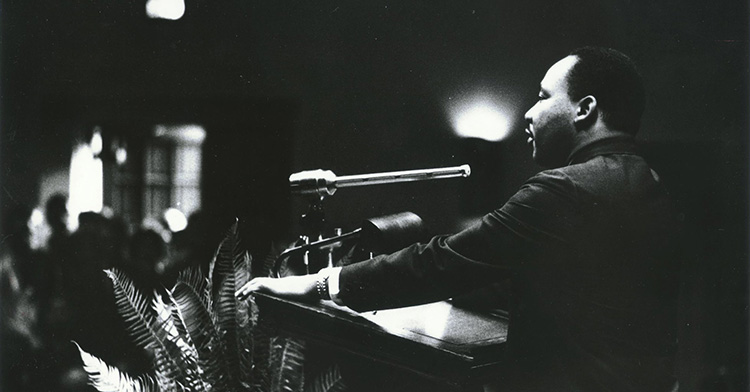Hierarchy is a bad word for many people. What we want instead, we are told, is an egalitarian way of relating. Our institutions, our communities, our families -- these should all be egalitarian. Where hierarchy issues in oppression, egalitarianism calls for mutual respect, honor and humane treatment of the other.
Of course, Christians ought to be against true oppression and for genuine love of neighbor. But the trouble with wanting to get rid of hierarchy is that it cannot be gotten rid of.
Indeed, the very idea that we could choose either hierarchy or egalitarianism presents us with a false choice. Hierarchy is endemic to and inexpugnable from human life (at many different levels).
To be sure, the Fall intensifies the difficulties we have with hierarchies (as with any part of life). But even in Eden, children would presumably have had to be raised. To believe that we could simply do away with hierarchy is akin to the idea that we could breathe air without inhaling oxygen. The question we initially face, therefore, is not “Will we have hierarchy?” but instead “What kind of hierarchy will we have, and how shall it be inflected?”
The difficulty is that there is no one-size-fits-all kind of hierarchy, a model to ensure that every sort of hierarchy at all times and in all places is oriented to the good. Nor is there a general rule or principle around which all hierarchies can be oriented.
Hierarchies, no less than any other indispensable form of structuring human life, are susceptible to gross evil at any time and in all places, and they likewise have the potential for being conduits of great good at any time and in all places. We cannot, then, simply say in general that one particular kind of hierarchy is better than the others.
It may well be that the Presbyterians have a better form of hierarchy than the Baptists, but the Baptists don’t think so. It may well be that the Roman Catholics have a hierarchy that rankles many Protestants, but the former may in fact be better (or it may not). It may well be that the Episcopalians have tried to blend two incompatible models of hierarchy and thus failed at both. Or it may well be that the Methodists know best how to create holiness through hierarchies (or maybe not).
Who’s to say, really? All the denominational hierarchies have been occasions of profound Christian witness as well as hypocrisy and failure. Laying the success and/or failure at the door of hierarchy of this or that kind proves impossible. Success and failure are more complex than the fact of hierarchy itself.
What this emphasizes, to put it rather simply, is the importance of the character of the leaders and the collective wisdom of larger communities. Scripture is full of various sorts of hierarchies (which is, of course, unsurprising if they are indelible features of life). Some show the ability to enrich life; others, to demean it.
We will take only two brief examples from the New Testament that illustrate, first, the wisdom of shaping a hierarchy toward a community’s public witness and, second, the importance of Christian character for leaders within a community’s hierarchical structure.
After Judas’ death, the apostles decide to reconstitute the twelve -- a symbol of the reuniting of Israel’s 12 tribes -- and they establish only one criterion: this person needs to have accompanied the original twelve as they went around with Jesus during his earthly life (Acts 1:21-22).
There were, as Luke’s Gospel attests, many more than the twelve who accompanied Jesus throughout his ministry. But from these, one must be lifted up to occupy the role Judas would have played in the leadership of the early church. The wisdom here is that the original apostolic hierarchy was formed in order to display symbolically the significance of Jesus’ ministry: in the life of Jesus, God is at work, fulfilling his eschatological promise to reconstitute Israel.
To lose the figure 12 would be to demonstrate that God’s fulfilling work was somehow compromised or perhaps even defeated. Maintaining a specific sort of hierarchy in this case is thus about the symbolic integrity of the community’s witness to the significance of Jesus’ earthly ministry.
The first letter to Timothy is often maligned today by those who want it to agree with modern conceptions of equality or justice. It is true that the letter contains some difficult passages to swallow (the reading of Adam’s behavior in Genesis 1-3 offered in 1 Timothy 2:14, for example) and that those who want rather simply to equate hierarchy with pernicious forms of patriarchy could find some help there for their case.
But as a whole, its specifications for leadership within the church’s assumed hierarchy illustrate the truth that leadership and the moral life are inextricably bound together. Contrary to the sort of pronouncements we frequently hear today that the “private” lives of leaders should have no bearing on their “public” role, 1 Timothy 3:1-8 insists that elders and deacons model the virtues and behaviors that work against such a separation.
For example, elders are, among several other things, not to be “recent converts.” And deacons, also among several other requirements, are “to be tested.” The insight behind both injunctions is that it takes time for Christian habits to suffuse one’s life to the degree required for leaders. Hierarchy of the sort the church needs presumes the necessity of Christian leaders who evidence maturity that is visible not just “at work” but everywhere.
The wisdom here pertains to the truth that hierarchies can be poisoned by leaders whose character contravenes the mission of the community for whom the hierarchy exists. The structure then no longer helps to bear witness to the goodness of God in Christ but instead becomes the occasion for a truthful indictment of hypocrisy.
It is doubtless true, of course, that hierarchical structures can themselves be the problem and that no amount of good will or good character would be sufficient to address the systemic sin that results. In such cases, the structure itself needs to be criticized and changed. Christian thinking about hierarchy, that is, assumes the necessity of prophets.
But prophets in the biblical sense are much more than the contemporary view of them as “truth tellers,” or those whose principal job is to speak “truth to power.” Prophets should tell the truth, but they tell the truth for the sake of the larger community or communities to which they are resolutely committed.
As Michael Walzer has noted, they are “connected critics,” those whose truth telling serves the irreplaceably important role of constructively guiding the community toward its rightful end. Prophets, in short, aim to work themselves out of a job: the prophetic vocation assumes the hope that prophets will not only be heard but also be heeded.
And what comes about after prophetic criticism and dismantling will not be “no-hierarchy” but only a different -- and, one hopes, better -- sort of hierarchy. When that change occurs, wisdom will be needed to identify leaders who refuse the dichotomy between public and private life and who see the possibility of Christian witness in and through community or institutional order.
In the end, talking about hierarchy thus turns out to be another way to highlight the importance of Christ-shaped leadership and thriving communities. If it is right to say that hierarchy or no-hierarchy is a false choice, then it is to our peril that we ignore hierarchy’s inevitable role in our lives.
It simply will not do for Christian leaders to complain about hierarchy itself. The critical issue, rather, is how best to cultivate its potential for a community’s witness to Christ in light of the leaders who inevitably shape much of its functioning in actual daily life.













